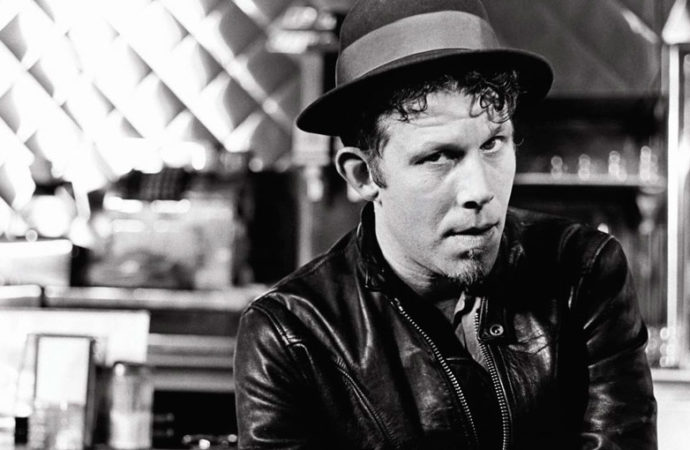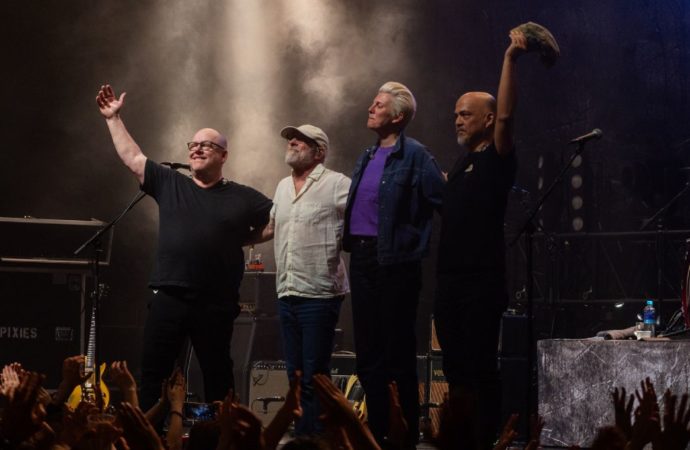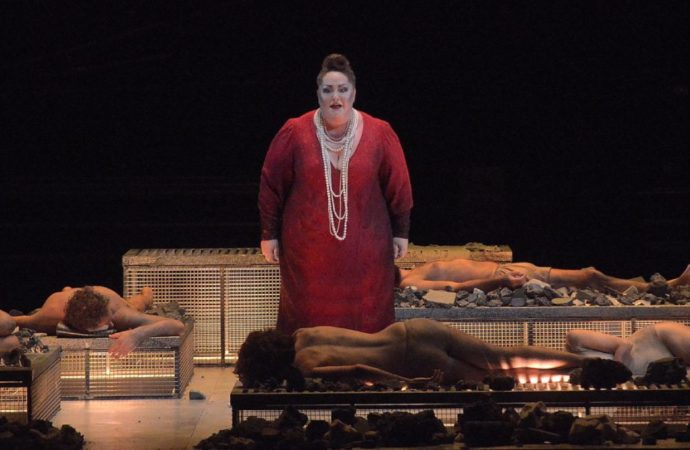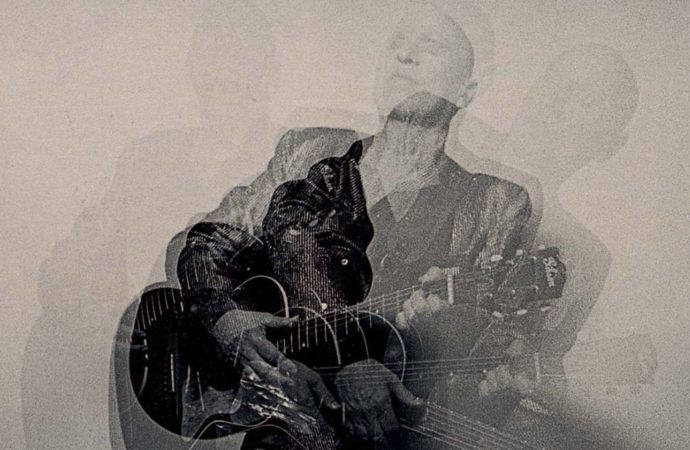The story of Bruce Springsteen‘s Born in the USA is that of a great misunderstanding, of a protest song turned into a patriotic anthem, of a man who hasn’t given a toss turned into a voice of the working class, of the saviour of rock & roll turned into a pop star or of an era that was sold as the sublimation of the American Dream but had a lot of nightmare.
It is impossible to talk about this album and not talk about its sister album, Nebraska, which was created almost at the same time. The roots of Born in the USA are to be found in that mythical demo that he recorded at his home in Colts Neck, in his native New Jersey, with his acoustic guitar, and from which Nebraska would emerge. In 1981, after the successful tour of The River, Springsteen had written a song called ‘Vietnam’, inspired by the autobiography of Ron Kovic, a war veteran, which was called ‘Born on the Fourth of July’. His original version, a protest song against the treatment of veterans after returning to the US, was joined by a title ‘Born in the USA’, which was the name of the project by director Paul Schrader, who asked Springsteen for material for the film.
When he had finished it, along with other songs of the same type, he decided to record them on a demo between 17 December 1981 and 3 January 1982, including ‘Born in the U.S.A.’, ‘Nebraska’, ‘Atlantic City’, ‘Mansion on the Hill’, ‘Downbound Train’ and ‘Child Bride’ (which would become ‘Working On The Highway’). At the end of that same month of January, he joined the E Sreet Band to help Gary U.S. Bonds record the album On the Line, for which he had written some songs and was going to produce with his partner Steve Van Zandt. During that session they recorded ‘Cover Me’, a song he had written for Donna Summer, but when his manager Jon Landau heard it, he asked him to keep it because he saw a lot of potential in it. Springsteen agreed and wrote another song for Summer.
And Landau was partly right, Bruce Springsteen was a rock star, as he himself had predicted, he had become the future of rock & roll, he sold a lot of records and filled stadiums but, in spite of everything, his presence in the Top Ten of the Billboard singles chart only had one guest, ‘Hungry Heart’, a song that Springsteen had thought of offering to the Ramones, something that had happened to him before, since his biggest hits in the charts were ‘Fire’, recorded by the Pointer Sisters, and ‘Because The Night’, which Patti Smith kept.
In April Springsteen, with the full E Street Band, began recording the demo versions with the band. But it soon became clear that some of the songs worked with a band, but others didn’t. The moment when it became clear to everyone that they were getting somewhere was when they recorded ‘Born in the USA’ and Roy Bittan added the opening synth riff and Max Weinberg added those tree-trunk-like drum beats. The sessions stretched into May and Springsteen brought back new songs that they also recorded, including ‘Darlington County’, ‘Frankie’, ‘Glory Days’, ‘I’m Goin’ Down”, “I’m on Fire”, “Murder Incorporated”, “My Love Will Not Let You Down”, plus a new version of “Cover Me”. It was May 1982 and Springsteen and the band had already recorded 8 of the 12 songs that would appear two years later, in June 1984, on Born in the USA.
But Bruce Springsteen focused on the songs on that acoustic demo that had not worked with the band, the roughest and most desperate of his career. There was talk of releasing a double album, with the acoustic part on one disc and the songs recorded with the band on another, but the singer knew that the strength of the E Street Band would diminish the impact of the acoustic part, so he decided to release the songs as they were, in September 1982, under the title Nebraska. He didn’t promote it, he didn’t make videos, he didn’t give interviews, and he didn’t go on tour, but even so, the album was a success, reaching number 3 in the charts on both sides of the Atlantic and allowing him to show a new face, close to idols like Woody Guthrie, Pete Seeger or the first Dylan.
But Landau and Springsteen knew there was another side, much more musically radiant, despite sharing the themes of Nebraska, on which they were sitting. But they had time to keep trying things out, and Springsteen is known to be a perfectionist who always tries dozens of songs for each album until he finds it, so, in late 1982, he began recording another handful of songs, close to the spirit of Nebraska, solo with the help of a drum machine. Among them were ‘Shut Out the Light’, ‘Johnny Bye-Bye’, ‘Cynthia’, ‘One Love’, ‘Richfield Whistle’, ‘Fugitive’s Dream’, ‘County Fair’, ‘Unsatisfied Heart’, ‘Little Girl Like You’, ‘Seven Tears’, ‘Sugarland’, ‘Don’t Back Down’, ‘The Klansman’ and ‘My Hometown’, the only one of the lot that would end up seeing the light of day on the album. Like ‘I’m on Fire’ you can notice a slight influence of Suicide and, like that one, in it you can see the origins of ‘Tunnel Of Love’ and the whole discography of The War On Drugs.
In May and June 1983 he got back together with the E Street Band and recorded another batch of songs, as well as some re-recordings of earlier songs, such as ‘My Hometown’, among the new ones were ‘Pink Cadillac’, ‘Car Wash’, ‘TV Movie’, ‘Stand on It’ or ‘County Fair’, but in the E Street Band there was an empty chair, because, for the first time since the Born To Run tour, Steve Van Zandt left the band to seek his fortune on his own. It was the first split with his closest friend, someone he had known since 1966. From it would come two other songs from the album, ‘Bobby Jean’, dedicated to their friendship and where Springsteen and Van Zandt had always loved the Spector sound, although now synthesizers were added to the Wall of Sound, and ‘No Surrender’, whose inclusion on the album was at Van Zandt’s own suggestion, at the last minute, saying that the song served as a bridge between the old Springsteen and the one on this album.
By the end of 1983 more than 60 songs had been recorded for the album, but Bruce Springsteen was still not satisfied, in January he decided on the title, Born in the USA, and it was clear to him that the album should start with that song and end with ‘My Hometown’, but he was still recording songs, such as the outstanding ‘Rockaway the Days’. In February, Landau, the same Landau who told him to stick with ‘Cover Me’, told him that he still didn’t see a clear single, and the next day Springsteen appeared with ‘Dancing In The Dark’, perhaps the poppiest of his songs, again with Bittan’s synthesizer carrying the song.
The album was ready, with Springsteen and the other two producers, Jon Landau and Chuck Plotkin, deciding to focus on those early recordings from May 1982. A total of 12 songs emerged from a selection of some 70 songs, including such gems as ‘Pink Cadillac’, ‘Janey Don’t You Lose Heart’, ‘Shut Out The Light’, ‘Johnny Bye-Bye’, ‘My Love Will Not Let You Down’, ‘Rockaway The Days’, ‘Lion’s Den’, ‘This Hard Land’, ‘Betty Jean’ and the wonderful ‘Murder Incorporated’, which could have formed another great classic in Springsteen’s discography.
If there was one thing the final 12-song track listing showed, it was that the album had no shortage of singles, ‘Dancing In The Dark’ was the biggest seller, reaching number 2 in the charts, but the other 6 singles released from the album, ‘Cover Me’, ‘I’m on Fire’, ‘Glory Days’, ‘I’m Goin’ Down’ and “My Hometown” all made it to the top of the charts, with its disco funk point, the title track, ‘I’m on Fire’, ‘Glory Days’, ‘I’m Goin’ Down’ and “My Hometown” all cracked the Top Ten, tying the record that Michael Jackson had just achieved with “Thriller”, 7 top tens for the same album. The Saviour of Rock, the new Dylan, had become a pop star on a par with Jackson himself, Prince (who released Purple Rain that same month) and Madonna.
Born in the USA was the luminous face of Nebraska, the characters were the same, working people coming face to face with harsh reality, but the music was so vitalist that it seemed as if this Woody Guthrie rocker was singing the praises of the Promised Land. That’s what Ronald Reagan thought in the year he swept to a second term in office, his team didn’t stop to think much about the lyrics, fascinated by the power of a chorus that sounded like a new ‘Star Spangled Banner’ (the official US anthem) that he was going to appropriate for his conservative revolution.
The flag cover, the baseball cap, the sleeveless T-shirts and the skinny jeans, Bruce Springsteen’s audience was the same one that Reagan was addressing, a predecessor of that ‘Make America Great Again’, Springsteen had to watch in horror as Reagan turned his anti-military harangue into the ultimate patriotic anthem, but the E Street Band’s force was overwhelming and understood no subtleties, Even so, anyone who stopped to listen to the lyrics could start scratching their heads wondering if it was really so good to be born in these United States. It’s not for nothing that Springsteen had put the last song on the album, ‘My Hometown’, a song that began with the memories of the protagonist’s father, which instilled pride in the family’s hometown. But what at first appeared to be another nostalgic look at the speaker’s childhood turned into a description of the racial violence and economic depression he witnessed as a teenager and young man in his own New Jersey. The song ended with the sad reality that the family plans to move out of town, but not before taking his own son for a walk and expressing that same pride in his homeland that his father had instilled in him. Springsteen was far from hating America, but he knew it was not the paradise Reagan was trying to sell. Especially for those who didn’t look like him, being born in the United States was no wonder.









No one has posted any comments yet. Be the first person!